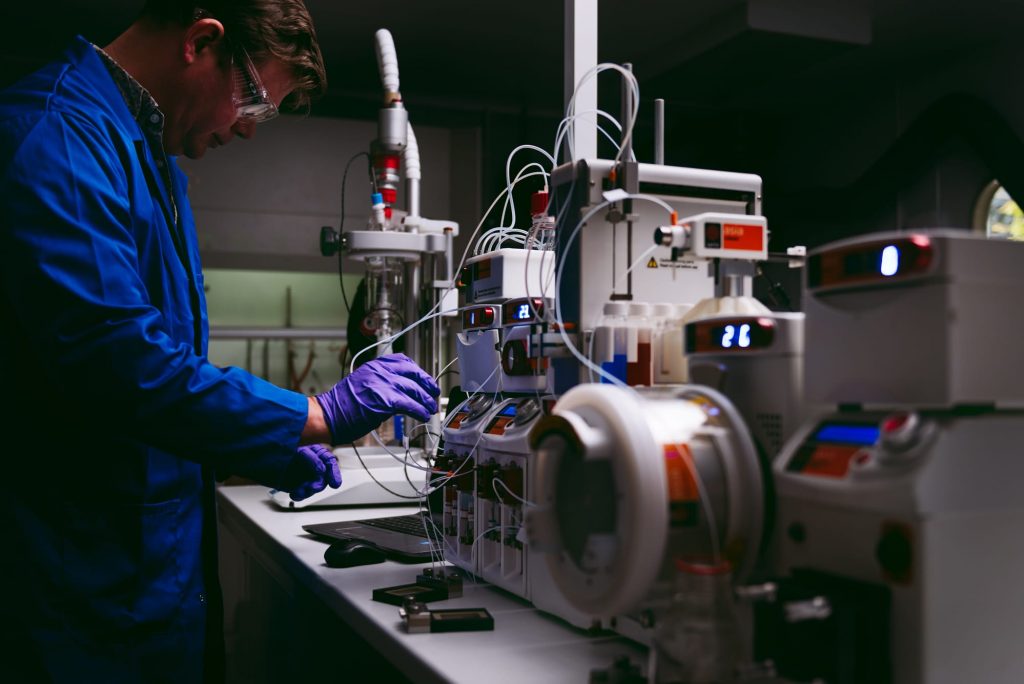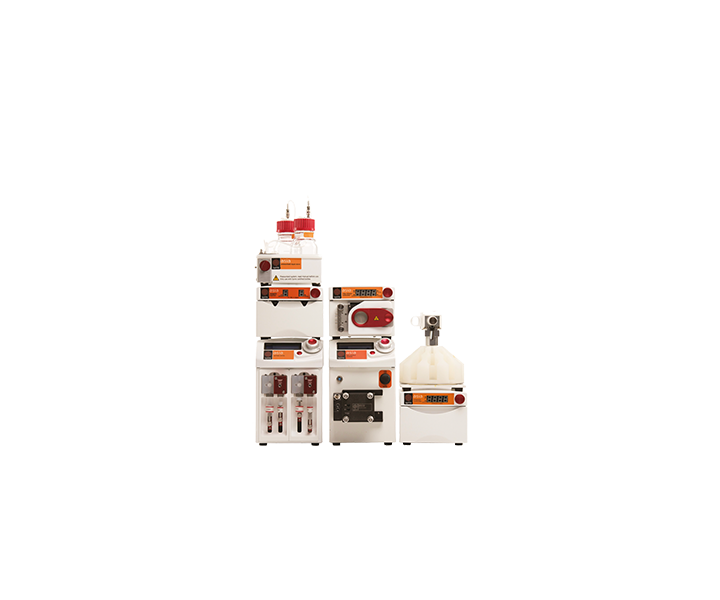What is electrochemistry?
Electrochemistry enables the unique activation of reagents enabling selectivity and transformations not possible by other techniques. The transfer of electrons drive reactions and transformations, meaning that electrochemistry is a surface phenomenon whereby reactions are optimised when there is a high surface area to volume ratio.
Electrochemistry in flow means that the substrate can be streamed through in between two electrodes. As a result, the ability to adjust the flow rate will adjust the amount of time that the substrate is exposed to the electron transfer process.
The advantage of this over typical batch methods means that we can maximise the potential of the surface phenomenon properties i.e. reducing the distance between the electrodes for more efficient electron transfer. As such electrochemistry in flow greatly allows for better control and selectivity of the reaction.
Benefits of electrochemistry in flow chemistry applications
Along with the ability to access unique reactions and transformations that are not possible by other techniques, electrochemistry also enables:
- A reduction in the quantities of toxic and hazardous oxidizing/reducing agents used
- The generation of reactive intermediates. Ideal for multi-step syntheses
- Rapid Oxidations and ReductionsOxidative synthesis of drug metabolites
- Oxidative synthesis of drug metabolites
In an electrochemical reaction, the reaction is driven by the number of electrons available to activate molecules to result in the desired reaction.
Conducting electrochemistry in flow means that you can stream substrate continuously in between the electrodes during electron transfer. The ability to adjust flow rates means that the residence time of electrochemical reactions is under tight control with residence times often determining the product distribution and control of by-product formation.
Additionally, after the initial set-up of your experiment. Electrochemical reactions can be continuously run and collected in an automated fashion. As a result, running in flow means you can get larger volumes of substrate undergoing electrochemical reactions and get larger quantities of product per experiment.
As you are also streaming fluid in a channel between two electrodes, reducing the distance between the electrodes allows for better control of the number of electrons that are transferred to the substrates enabling better control and selectivity of the reaction meaning that alongside more accurate product distribution you will also obtain higher yields of product.

Core flow principles mean that temperature control is also substantially more efficient during electrochemical reaction, as smaller channels promote much more efficient heat transfer, as a result, a range variables can be controlled in a single electrochemical reaction to achieve the desired conditions. All these factors mean that electrochemical reactions in flow can occur much faster than the analogous reaction in a batch process with reactions that can take up to several hours typically occurring in several minutes whilst also giving more, well-distributed produce due to the amount of control afforded when running Electrochemistry in flow.
All these factors mean that electrochemical reactions in flow can occur much faster than the analogous reaction in a batch process with reactions that can take up to several hours typically occurring in several minutes whilst also giving more, well-distributed produce due to the amount of control afforded when running Electrochemistry in flow.
Related products
These products are suitable for reagentless chemistry applications. If you’d like to chat more about your application, get in touch.
